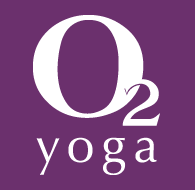I hear that question often from students regarding when they will be ready to move out of Basics and try other levels. My answer is this:
The Basics classes are designed for a couple things.
1. For students new to O2 to learn the foundation of our practice.
2. For students who have been coming for a while to come back to the foundation and work on alignment and strength building.
If You Are New To O2
I suggest that anyone new to the studio, regardless of how long they have practiced, start with the Basics. We do things quite differently that other studios and styles and it is helpful to understand the foundation before moving ahead to Intermediate and Power. I also suggest that students who haven’t been practicing very long take between 6 and 10 Basics classes before trying other levels. Once a student understands how the push-up (Chaturanga Dandasana), Up-dog (Urdhva Mukha Svanasana), and Down-dog (Adho Mukha Svanasana) are supposed to be done they can try to move on. This doesn’t mean you have to do them perfectly. No one can. I am still working on my alignment and making new discoveries about these basic postures 15 years in and I still take Basics frequently as a way of working on the foundation of my practice.
Two Different Kinds of People
There are two kinds of people. The people who like to dive into things that are sometimes way over their head, and the people who think they are never ready for something new. Well okay, there are lots of people in between but these are two extremes that I see a lot. I see some people who really need to work on their foundation more but choose to come to higher level classes. They like the challenge and will still learn a ton as long as they are patient. There are others who feel that they will never be able to take an Intermediate class because they are not _______ enough. Fill in the blank for yourself if you are one of those people. I don’t know if these people are like this across the board or not. I know I am one of the close-my-eyes-and-dive-in-headfirst-into-challenging-situations kind of person. In fact, I will consciously push myself to try something that scares me. It is almost as if I am uncomfortable being comfortable. This quality doesn’t always serve me well. Others don’t like being outside of their comfort zone and will stay with what they know and are familiar with sometimes way too long. As the Buddhists say, sometimes we just need to sit with being uncomfortable. What does that mean for you? For me it means, don’t freak out because everything seems to be going along smoothly. For someone else it might mean, don’t freak out because everything is not going along smoothly.
Sukha/Stira
The concept of sukha/stira refers to the balance of soft and hard. Some of us push too hard, we strain, we hold our breath. we grip and pull. Others hang out, drape over our legs, hang out and check out. Neither is good without the balance of the other. At O2 we strive for a balance of strength and flexibility, strength represents the stira, flexibility represents the sukha. One is not good without the other and neither are good in extreme. When it comes to being ready to move forward in your practice at O2 think more about how focused you are and less about how perfect your postures are. The focus: meaning the steady breath, the steady eyes, and the concentration on drawing energy away from distractions and to the present moment, are the key to the practice. As a teacher, I often see students deep in postures but they are totally checked out. I see others who are working so hard to get deeper that they are all scrunched up and constricted. The goal of this practice is be able to find the appropriate balance between your personal strength and flexibility in the posture and breath, get steady, and focus. This balance is incredibly elusive. After many years of practice, I am just starting to get a feel for that steadiness and boy does it feel better than pushing or hanging out. Samastitihi, equal or steady standing, is the posture that we repeat every time with come to the top of the mat. It represents this steadiness, this balance between the two extremes and is a reminder to come back to center and away from the extremes.
When Will You Be Ready?
Back to the original question; When will I be ready? Most anyone who has been coming to O2 Basics for over a month consistently can try any class on the schedule (Lynne’s Astanga Foundations is like Basics for Astanga). That doesn’t mean you won’t be challenged and sometimes be a bit over your head. The good news is that we always teach progressively and give lots of stages for each posture. You get to choose which stage is appropriate that day but you also may have more options to choose from which is nice. If you are unsure, feel free to ask any one of our teachers whether you are ready to try another level. Basics classes are really challenging and designed to build strength and awareness. In Intermediate and Power, you get to flow more and work on more challenging variations of basic postures which can be energizing and fun. Worst case scenario, you go back to Basics; best case scenario you have lots more options, times and teachers to choose from.


